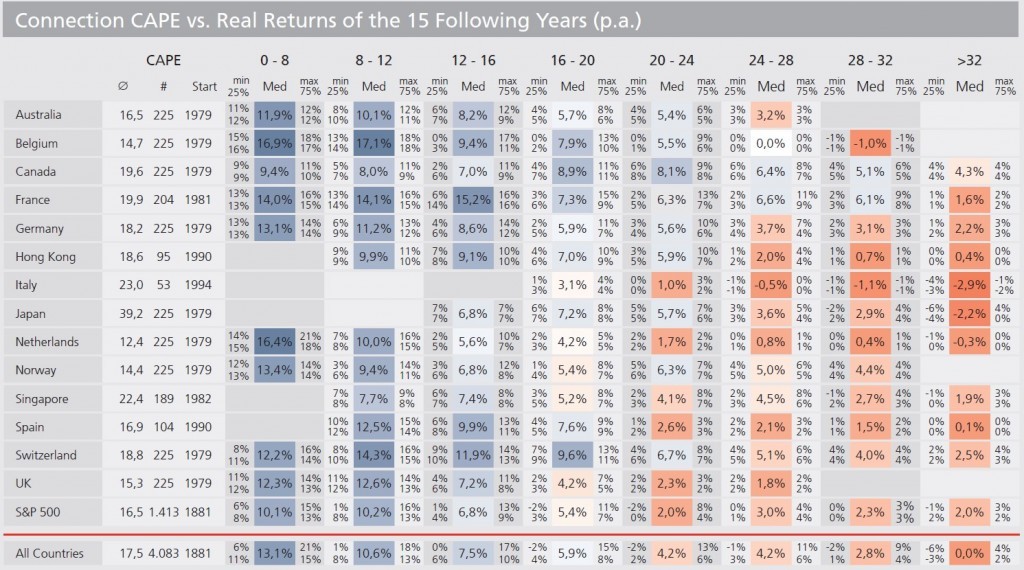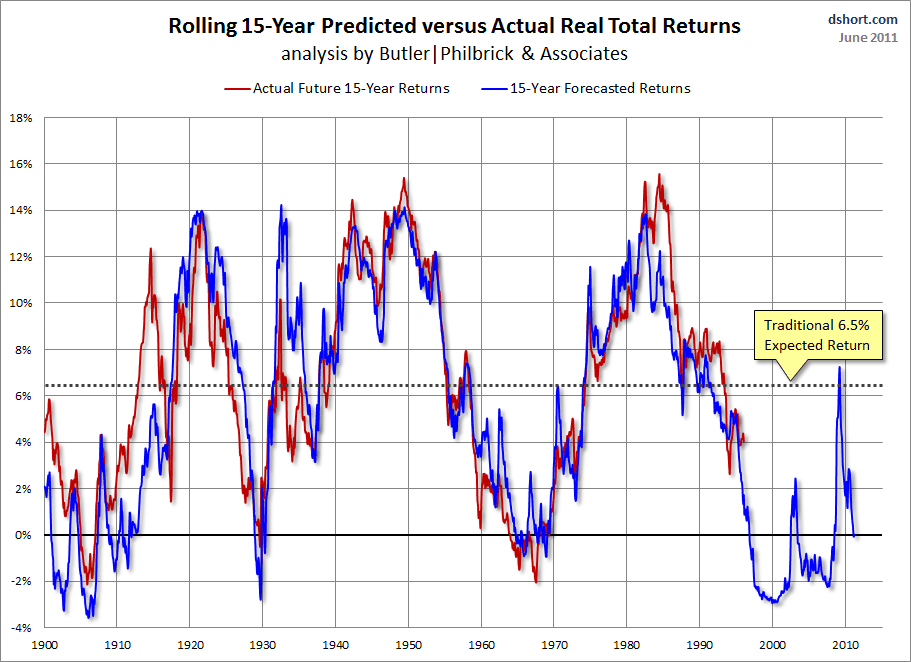CAPE Predicting Stock Market Returns
Post on: 1 Июль, 2015 No Comment

CAPE: Predicting Stock Market Returns by Norbert Keimling via StarCapital H/T Meb Faber
In the past 100 years, equity investors have managed to generate real capital growth of an annual average some 7 percent. No other form of investment – whether bonds, cash, gold or real estate offers comparable return potential. But does it still pay to invest in equities at this point in time, and what returns can investors expect in the long term?
The German equity index has more than doubled in price in the last five years since its low in March 2009. In 2013 alone, the DAX achieved more than 25 percent capital appreciation. Sad to say, hardly any investor participated in this. The latest BVI statistics document that German investors remained net sellers of equity funds in 2013 withdrawing capital worth more than EUR 6 billion.
The fact that investors frequently choose the wrong time to gain exposure or to exit is nothing unusual. But is it possible at all to identify lucrative buy opportunities or risks on equity markets in advance? The forecast quality of capital market experts gives reason for doubt. There is virtually no correlation between the market forecasts for the next year regularly published at year-end and the actual performance in that year. Even the question of whether shares prices are more likely to rise or fall in the following year appears virtually unanswerable. For example, in the crisis years 2001, 2002 and 2008 the most reputable credit institutions forecast price gains for the DAX in average terms of +20%, +12% and +5% respectively. However, the German equity index actually incurred extreme losses in these years of -20%, -44% and -40% respectively.
Not only proponents of the theory of efficient capital markets doubt the significance of short-term equity market forecasts. Traditional economic models for evaluating future equity market potentials are frequently based on questionable assumptions. The common procedure of drawing conclusions on the earnings development of companies from the economic development of a country and estimating the equity market potential from the equity market valuation derived from this is doomed to fail: At best a rough forecast can be made of the economic development, with the earnings development of global players increasingly decoupling from the internal economic trend of their country and profit growth correlating only very weakly with the equity market development in the short to medium term.
Furthermore, equity prices are determined in the short to medium term by unpredictable events. Terror attacks, the outbreak of war, oil price shocks, statements by central banks, currency crises as well as behavioral finance and herd effects influence short-term market happenings more strongly than calculable fundamentals. Three hundred years earlier, Newton already made the painful assertion that he „was able to calculate the movements of stars down to the very second but not the madness of men“.

What Significance does the classic Price-Earnings Ratio (P/E) have?
Hence, a meaningful connection between valuation ratios such as the familiar price-earnings ratio (P/E), which denotes the ratio of a market‘s corporate profits to the current market price and future equity market returns, couldn‘t even be established if it were possible to make a precise forecast of the next year‘s corporate profits. A further reason is that in recession years such as 2009 classic P/Es appear unattractive because the high or negative price earnings ratio resulting from the corporate losses does not factor in the companies‘ potential for earnings increases after the crisis.
Cyclically Adjusted Price-Earnings Ratio (CAPE)
However, many of the weaknesses of classic P/Es can be eliminated. Robert J. Shiller, winner of the Nobel Prize for Economics, was able to prove that inflation-adjusted corporate profits have achieved relatively stable growth on the American equity market since 1871 of 1.6% p.a.1. As above-average corporate profits in economically strong years are as short-lived over a long term horizon as high corporate losses in recession phases, he developed a cyclically adjusted price-earnings ratio (CAPE) which denotes the ratio of the current market price to the average inflation-adjusted profits of the ten preceding years.














